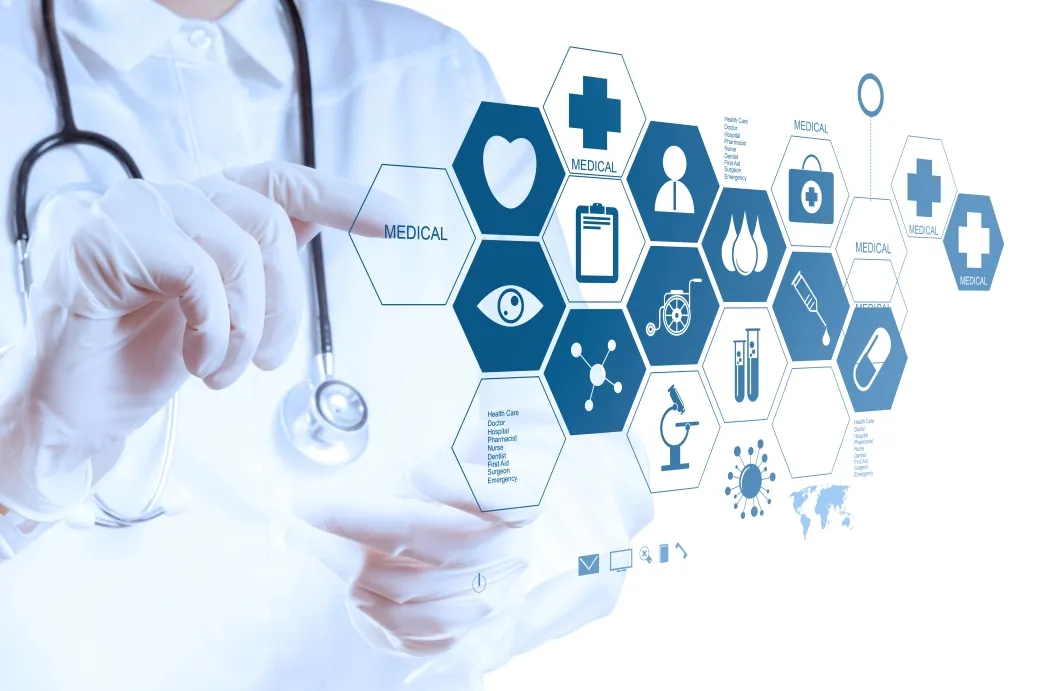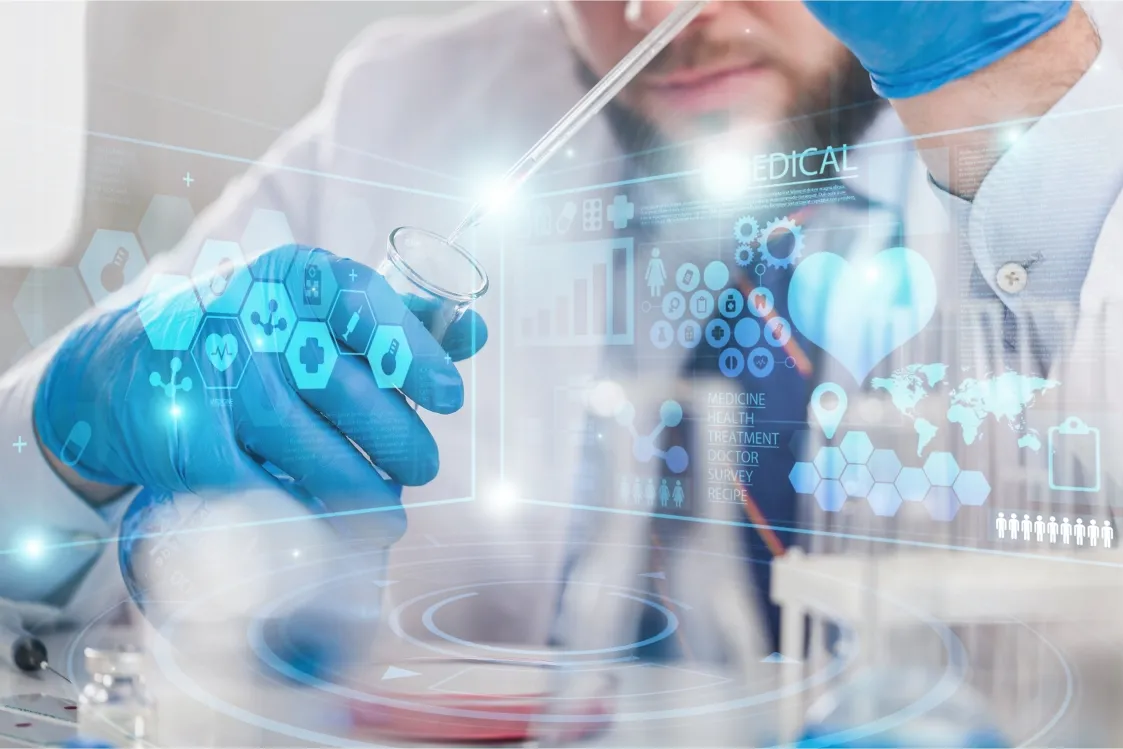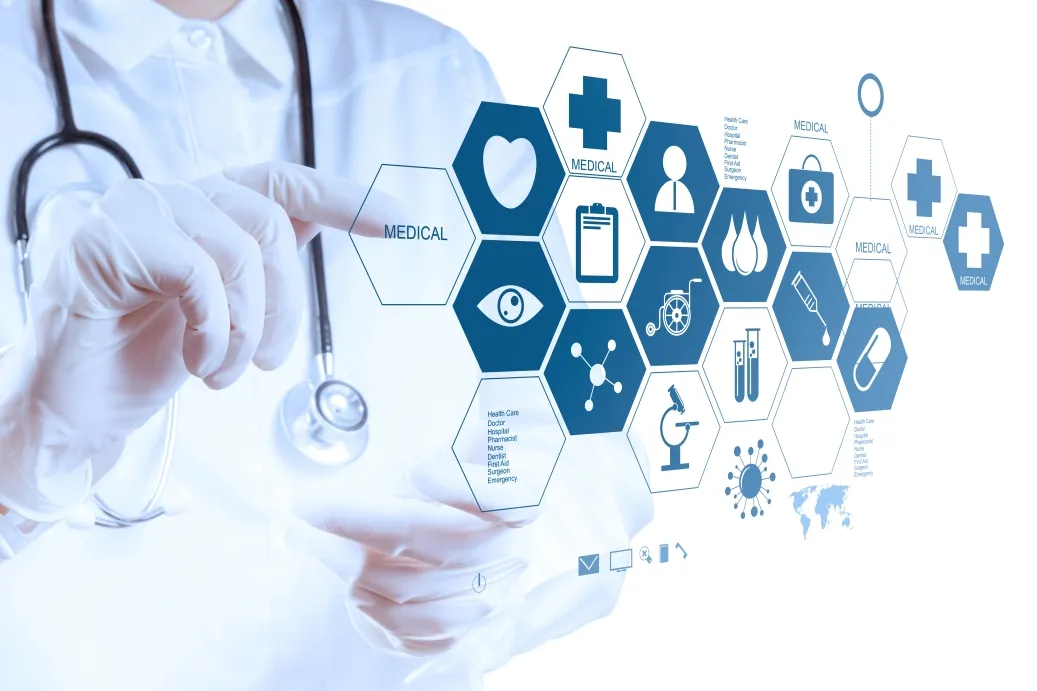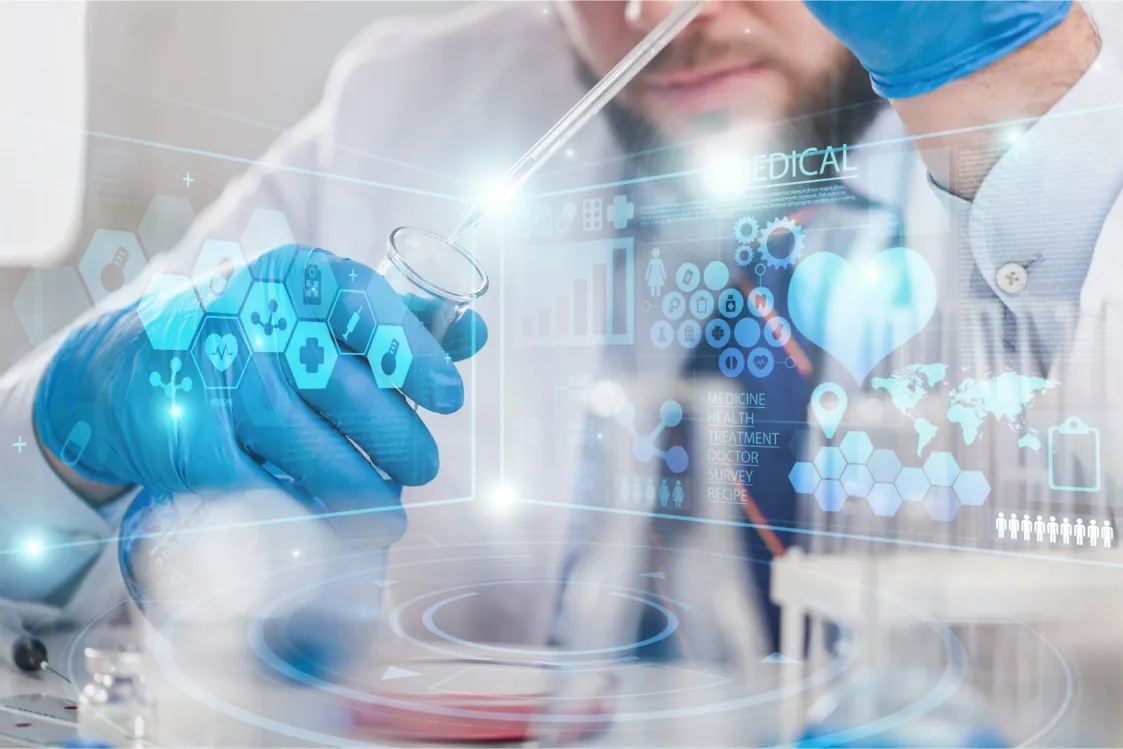Market Outlook
The global Antibody market size was valued at USD 9354.2 million in 2022 and is forecast to a readjusted size of USD 13230 million by 2029 with a CAGR of 5.1% during review period.
Antibody Market 2025: Trends, Innovations, and Forecasts for Market Growth
As the antibody market in 2025 approaches, the biotechnology and pharmaceutical industries are witnessing significant transformations. Antibodies, especially monoclonal antibodies, bispecific antibodies, and antibody-drug conjugates (ADCs), are paving the way for groundbreaking advancements in personalized medicine. This article explores the key trends and innovations driving the growth of the global antibody market and offers insights into regional dynamics, strategic considerations, and future market projections.
Key Drivers of the Antibody Market Growth in 2025
- The growing prevalence of chronic diseases such as cancer, autoimmune disorders, and infectious diseases is one of the primary drivers of the antibody market's growth. As the global population ages and the burden of these diseases increases, the demand for targeted antibody therapies is rising rapidly. Monoclonal antibodies (mAbs), which are designed to bind to specific antigens, are gaining traction for their precision and efficacy in treating a wide range of diseases, including oncology and rheumatoid arthritis.
- Moreover, innovations in biotechnology—including the development of recombinant DNA technology and advancements in gene editing techniques—are enabling more effective and personalized antibody therapies. These therapies not only provide better treatment outcomes but also reduce adverse effects, offering a more tailored and safer approach to healthcare. The trend toward personalized medicine has proven to be a significant catalyst in driving the antibody market forward as it continues to gain momentum in 2025.
Breakthrough Innovations in Antibody Technologies for 2025
- As we move closer to 2025, several innovative antibody therapies are set to revolutionize treatment approaches, particularly in oncology and autoimmune diseases. The rise of bispecific antibodies, which are designed to simultaneously target two different antigens, represents a major leap forward in improving treatment efficacy. These novel therapies enable the targeting of multiple disease pathways, providing a more comprehensive and potent treatment option for complex conditions like cancer and autoimmune diseases.
- Another significant innovation in the antibody space is antibody-drug conjugates (ADCs). ADCs are a hybrid of an antibody and a cytotoxic drug, offering the advantage of selectively delivering chemotherapy agents to cancer cells while sparing healthy tissue. This targeted delivery system reduces the harmful side effects of traditional chemotherapy, which makes ADCs a promising solution for cancer treatment.
- Furthermore, the development of fully humanized antibodies is helping to address the issue of immunogenicity, where the body’s immune system may attack the therapeutic antibody. By closely resembling naturally occurring human antibodies, these therapies are proving to be safer and more effective for patients, particularly in long-term treatments.
Regional Market Insights: Where is the Antibody Market Growing?
- The global antibody market is diverse and exhibits distinct regional trends, each influenced by factors such as healthcare access, research capabilities, and economic conditions. North America, led by the United States, continues to dominate the global antibody market due to its robust healthcare infrastructure, high investment in biotechnology research, and favorable regulatory environment. The U.S. is home to leading biotech and pharmaceutical companies that are developing some of the most advanced antibody-based treatments in oncology, autoimmune diseases, and beyond.
- Europe is another key region for antibody market growth, particularly in countries like Germany, France, and the United Kingdom. With a strong focus on immunotherapy and personalized medicine, Europe’s regulatory support and increasing access to innovative antibody therapies are driving growth in this region.
- Meanwhile, the Asia-Pacific region is experiencing rapid growth in the antibody sector, with China, Japan, and India emerging as major players in the global antibody market. As these countries invest heavily in biotechnology, healthcare infrastructure, and biopharmaceutical research, the demand for antibody therapies is on the rise. China’s government-backed initiatives aimed at advancing biotechnology research are expected to accelerate the adoption of antibody therapies in the region.
Strategic Considerations for Antibody Market Stakeholders
Businesses looking to succeed in the antibody market in 2025 need to focus on several strategic considerations:
- Research and Development (R&D): Companies should continue to prioritize R&D to develop next-generation monoclonal antibodies, bispecific antibodies, and ADC technologies. Innovation will be key in capturing market share and addressing the growing demand for personalized treatment solutions.
- Collaborations and Partnerships: Forming strategic partnerships with academic institutions, biotech firms, and pharmaceutical companies will help expedite the development and commercialization of cutting-edge antibody therapies. Collaborative efforts will also be crucial in overcoming regulatory challenges and speeding up time-to-market.
- Cost Reduction in Manufacturing: As demand for antibody therapies increases, businesses must focus on cost-effective manufacturing solutions. The development of scalable biomanufacturing processes and technologies will help meet the rising demand for these therapies while keeping production costs low.
- Navigating Regulatory Hurdles: Companies should stay up-to-date with regulatory changes in key markets, including the FDA in the U.S., EMA in Europe, and NMPA in China. Efficient navigation of the drug approval process is critical to ensuring that antibody therapies reach the market quickly and effectively.
Conclusion: The Future of the Antibody Market in 2025
Looking toward 2025, the antibody market is poised for tremendous growth, fueled by breakthroughs in biotechnology, increasing demand for personalized medicine, and the rise of innovative antibody therapies like bispecific antibodies and antibody-drug conjugates. The market presents enormous opportunities for businesses, researchers, and healthcare providers who are ready to adapt to these changes.
For companies seeking to capitalize on the booming antibody market, a strong focus on R&D, strategic partnerships, and scalable manufacturing will be crucial. By leveraging innovations in monoclonal antibodies and personalized treatment approaches, stakeholders can position themselves to thrive in this rapidly evolving market. As the antibody market expands and matures, it promises to deliver more targeted, effective treatments that will have a lasting impact on global healthcare.
NOTE:
Quants and Trends is proud to offer an extensive portfolio of meticulously researched healthcare market reports, numbering in the thousands. We also provide tailored customization services to ensure our insights align precisely with your strategic objectives and informational needs. For personalized assistance or to discuss your specific requirements, we invite you to get in touch with our team. We also encourage you to request a complimentary sample PDF report. Please visit our Sample Request Page to receive yours today.
Key Market Players
Roche
Johnson and Johnson
Merck
Novartis
AbbVie
Amgen
Pfizer
Bayer
Lilly
Bristol-Myers Squibb
GlaxoSmithKline
Biogen
AstraZeneca
Sanofi
Alexion Pharmaceuticals
Seattle Genetics
Segmentation By Type
IgM
IgG
IgA
Other
Segmentation By Application
Therapeutic
Research
Diagnostic
Segmentation By Region
North America (United States, Canada and Mexico)
Europe (Germany, France, United Kingdom, Russia, Italy, and Rest of Europe)
Asia-Pacific (China, Japan, Korea, India, Southeast Asia, and Australia)
South America (Brazil, Argentina, Colombia, and Rest of South America)
Middle East & Africa (Saudi Arabia, UAE, Egypt, South Africa, and Rest of Middle East & Africa)
Market SWOT Analysis
What are the strengths of the antibody market in 2025?
The antibody market in 2025 will benefit from a strong pipeline of innovative therapeutic antibodies, expanding the scope of treatment for various chronic and life-threatening diseases. There’s also an increasing demand for personalized medicine, which antibodies can effectively address. Moreover, technological advancements in antibody development and manufacturing processes will lower costs and improve accessibility.
What weaknesses are present in the antibody market in 2025?
A major weakness is the high cost of antibody production, which can limit accessibility, especially in emerging markets. Additionally, regulatory challenges and the complexity of clinical trials for novel antibody therapies could slow down the approval process. There is also the risk of adverse reactions and side effects, which could affect patient safety and market acceptance.
What opportunities can the antibody market seize in 2025?
The antibody market has significant opportunities in the treatment of rare and autoimmune diseases, where targeted therapies can provide effective solutions. The rise of biosimilars presents an opportunity to reduce costs and expand market access. Additionally, growing investments in biopharmaceutical R&D and partnerships between biotech companies and research institutions will continue to drive innovation.
What threats could impact the antibody market in 2025?
The primary threat comes from the potential for market saturation, especially with the growing number of antibody-based treatments becoming available. Intellectual property challenges, such as patent expirations, could lead to increased competition from generic and biosimilar manufacturers. Lastly, global economic instability and shifting healthcare policies could affect funding and market dynamics.
Market PESTEL Analysis
What are the political factors influencing the antibody market in 2025?
Government policies and healthcare regulations will play a significant role in shaping the antibody market. The approval process for antibody-based therapies may become more streamlined or face stricter requirements depending on the political environment. Policies around healthcare access, pricing, and reimbursement will also impact market growth, especially in both developed and emerging markets.
What economic factors are affecting the antibody market in 2025?
Economic factors such as healthcare budgets, economic stability, and the affordability of advanced treatments will be crucial. In more economically developed countries, there may be greater access to antibody therapies, but in less economically developed regions, cost constraints could limit market potential. Additionally, the economic feasibility of developing and manufacturing antibodies will influence the availability of treatments.
What social factors are shaping the antibody market in 2025?
Social awareness and the demand for personalized medicine are driving growth in the antibody market. As people become more educated about the benefits of antibody treatments for various diseases, there is increasing demand for targeted therapies. Additionally, the aging global population is contributing to a greater need for treatments for chronic and age-related diseases, where antibodies are effective.
What technological advancements are impacting the antibody market in 2025?
Advancements in biotechnology, such as improvements in monoclonal antibody production and recombinant DNA technology, will greatly impact the antibody market. Innovations in drug delivery systems, like nanoparticle-based technologies, will improve the efficacy and targeting of antibody therapies. The rise of artificial intelligence in drug discovery and patient-specific therapies will further accelerate the development of antibodies.
What environmental factors are relevant to the antibody market in 2025?
Environmental sustainability in the production of antibodies will be increasingly important. Companies are expected to focus on minimizing the environmental footprint of their manufacturing processes, particularly in terms of energy consumption, waste management, and water usage. Climate change-related shifts in disease patterns may also lead to higher demand for certain antibody treatments.
What legal factors influence the antibody market in 2025?
Legal factors such as intellectual property rights, patent protections, and the regulation of biosimilars will significantly impact the antibody market. Stricter patent laws could benefit innovators but might increase costs. Additionally, changes in healthcare regulations, including price controls and approval pathways for new treatments, will affect market dynamics and access to antibody therapies.
Market SIPOC Analysis
Who are the suppliers in the antibody market in 2025?
Suppliers in the antibody market include biotech companies, research institutions, contract manufacturing organizations (CMOs), and raw material suppliers such as cell lines, reagents, and bioreactors. Additionally, technology providers that specialize in gene-editing tools, bioprocessing equipment, and drug delivery systems play a key role.
What are the inputs required for the antibody market in 2025?
The inputs required include scientific research and development (R&D), funding for clinical trials, raw materials for antibody production, such as monoclonal antibody cell lines and bioreactors, and cutting-edge technologies for drug formulation and delivery. Regulatory expertise to navigate approval processes is also an essential input.
What are the processes involved in the antibody market in 2025?
The key processes involve the discovery and development of antibodies, including preclinical research, clinical trial phases, regulatory approval, and large-scale manufacturing. This also includes marketing and distribution strategies, as well as ongoing post-market surveillance for safety and efficacy monitoring. R&D into new indications and biosimilars is an ongoing process.
Who are the customers in the antibody market in 2025?
Customers include healthcare providers, pharmaceutical companies, hospitals, and clinics. Patients suffering from chronic, autoimmune, or cancer-related diseases are direct beneficiaries of antibody therapies. Governments and healthcare insurance companies are also key customers, responsible for funding or reimbursing treatments for large patient populations.
What are the outputs of the antibody market in 2025?
The primary outputs of the antibody market are therapeutic antibody products such as monoclonal antibodies and biosimilars. These outputs also include research papers, patent filings, and approved antibody therapies that are distributed to hospitals, clinics, and pharmacies. Post-marketing services and ongoing clinical trials also generate valuable output data for the industry.
Market Porter's Five Forces
What is the threat of new entrants in the antibody market in 2025?
The threat of new entrants is moderate. While the antibody market has high entry barriers due to the complexity of research and development, expensive manufacturing processes, and regulatory hurdles, there is still a significant opportunity for new biotech startups to innovate, especially in niche therapeutic areas. Established companies may acquire successful newcomers, further reducing the impact of new entrants.
How intense is the bargaining power of suppliers in the antibody market in 2025?
The bargaining power of suppliers is relatively high. The antibody market relies on specialized raw materials and high-tech manufacturing equipment, which are controlled by a few key suppliers. These suppliers’ pricing power can influence the cost structure of antibody production, especially for bioreactors, cell lines, and other biotech-related components.
How intense is the bargaining power of buyers in the antibody market in 2025?
The bargaining power of buyers is moderate to high. While large healthcare organizations and governments may have significant leverage due to their purchasing volume, patients and smaller healthcare providers generally have less negotiating power. However, the increasing demand for affordable biosimilars could push manufacturers to lower prices or offer more flexible payment terms.
What is the threat of substitute products or services in the antibody market in 2025?
The threat of substitutes is moderate. Alternatives to antibody therapies, such as small molecule drugs, gene therapies, or emerging treatments like RNA-based therapies, could provide competition in some disease areas. However, antibodies are highly effective for many specific conditions, making them difficult to replace in their niche therapeutic roles.
How competitive is the rivalry among existing players in the antibody market in 2025?
The rivalry among existing players is very high. The antibody market is dominated by several large pharmaceutical companies that heavily invest in R&D, patents, and market access. There is also a growing presence of biosimilars, increasing price competition. Companies are racing to develop the next breakthrough therapy, leading to fierce competition for market share.
Market Upstream Analysis
What are the key upstream activities in the antibody market in 2025?
The key upstream activities include scientific research and discovery, sourcing of raw materials (like cell lines and reagents), and the development of advanced technologies for antibody production. This also involves securing funding for R&D, forming strategic partnerships with research institutions, and ensuring regulatory compliance for early-stage clinical trials.
How important is the role of suppliers in the upstream of the antibody market in 2025?
Suppliers play a critical role in the upstream process of the antibody market. They provide essential raw materials for antibody production, such as cell culture media, bioreactors, and specific reagents. High-quality inputs are necessary for the development of effective therapies, and any disruption in supply chains could delay production timelines and increase costs.
What challenges are faced in the upstream of the antibody market in 2025?
Challenges include the high cost and complexity of producing biologics at scale, securing quality raw materials, and the reliance on specialized suppliers. There are also difficulties related to maintaining compliance with stringent regulations, as well as the high level of investment required in early-stage R&D and clinical trials. Supply chain disruptions, particularly with specialized components, can also pose significant risks.
How do technological advancements impact upstream activities in the antibody market in 2025?
Technological advancements, such as automation in biomanufacturing, gene-editing technologies, and innovations in recombinant DNA techniques, will improve efficiency and reduce costs in upstream activities. These technologies will also enable faster and more precise development of antibodies, ultimately accelerating the R&D process and improving the scalability of antibody production.
What are the financial considerations in the upstream of the antibody market in 2025?
Financial considerations in the upstream process are significant, as antibody development requires substantial investment in R&D, clinical trials, and infrastructure for manufacturing. Companies will need to secure funding from investors, grants, or partnerships. Financial sustainability will depend on efficient management of production costs, investment in technology, and the ability to secure long-term revenue streams from successful therapies.
Market Midstream Analysis
What are the key midstream activities in the antibody market in 2025?
The key midstream activities in the antibody market include the large-scale production, purification, and formulation of antibodies. This also involves conducting clinical trials to test the safety and efficacy of antibodies, followed by regulatory submissions for approval. Additionally, managing quality control processes and optimizing manufacturing efficiency are critical components of the midstream phase.
How do manufacturing and production impact the midstream in the antibody market in 2025?
Manufacturing and production are at the heart of the midstream process, as they translate research into viable products. The ability to scale production efficiently while maintaining high-quality standards is essential for meeting market demand. This phase involves technology upgrades, such as cell culture systems and bioreactors, to ensure cost-effective and sustainable production of monoclonal antibodies.
What challenges are faced in the midstream of the antibody market in 2025?
Challenges in the midstream include the high cost and complexity of biologic production, regulatory hurdles, and ensuring consistent product quality. Manufacturing capacity constraints may also hinder the ability to meet global demand, especially with personalized or precision therapies. Supply chain issues and the need for specialized infrastructure for antibody production further complicate midstream activities.
How does regulation affect the midstream activities in the antibody market in 2025?
Regulation plays a critical role in the midstream, as all antibody products must undergo rigorous testing and meet regulatory standards before reaching the market. Compliance with agencies like the FDA or EMA requires companies to document every stage of production, from initial trials to final product release. Any delays in regulatory approval or unexpected changes in guidelines can impact timelines and market entry.
What role does distribution and logistics play in the midstream of the antibody market in 2025?
Distribution and logistics are vital to ensuring that approved antibody therapies reach healthcare providers and patients in a timely and cost-effective manner. Given the delicate nature of biologic drugs, maintaining the cold chain and ensuring the secure transport of antibody products are critical. Efficient logistics will be crucial to managing global supply chains and meeting the increasing demand for antibody therapies.
Market Downstream Analysis
What are the key downstream activities in the antibody market in 2025?
Key downstream activities include the marketing, sales, and distribution of antibody therapies to healthcare providers, hospitals, and patients. This also involves post-market surveillance to monitor the long-term safety and effectiveness of the drugs. Additionally, providing ongoing support, patient education, and working with insurers for reimbursement are critical downstream activities.
How do sales and marketing impact the downstream of the antibody market in 2025?
Sales and marketing play a crucial role in increasing the adoption of antibody therapies by healthcare providers and patients. Effective marketing strategies will help companies communicate the benefits of their products, differentiate them from competitors, and build brand loyalty. Sales efforts, including building relationships with key opinion leaders (KOLs) and healthcare institutions, will drive market penetration and growth.
What challenges exist in the downstream of the antibody market in 2025?
Challenges include competition from biosimilars, pricing pressures, and the need for ongoing patient education to ensure proper usage of therapies. Market access issues, such as securing reimbursement from healthcare insurers, can delay adoption. Additionally, addressing global disparities in healthcare access and affordability remains a significant challenge in many regions.
How does post-market surveillance affect the downstream of the antibody market in 2025?
Post-market surveillance is essential for ensuring the continued safety and efficacy of antibody therapies once they reach the market. It helps identify any rare or long-term side effects that may not have been detected during clinical trials. Strong post-market surveillance can enhance a company’s reputation, build trust with healthcare professionals, and potentially lead to extended indications or product improvements.
What role does reimbursement play in the downstream of the antibody market in 2025?
Reimbursement is a critical factor in the downstream market, as it determines the accessibility and affordability of antibody therapies for patients. Ensuring that therapies are covered by public and private health insurance is essential for widespread adoption. The negotiation of pricing and reimbursement terms with insurers and governments will significantly impact the market reach of antibody products.
Chapter 1, to describe Antibody product scope, market overview, market estimation caveats and base year.
Chapter 2, to profile the top manufacturers of Antibody, with price, sales, revenue and global market share of Antibody from 2018 to 2023.
Chapter 3, the Antibody competitive situation, sales quantity, revenue and global market share of top manufacturers are analyzed emphatically by landscape contrast.
Chapter 4, the Antibody breakdown data are shown at the regional level, to show the sales quantity, consumption value and growth by regions, from 2018 to 2029.
Chapter 5 and 6, to segment the sales by Type and application, with sales market share and growth rate by type, application, from 2018 to 2029.
Chapter 7, 8, 9, 10 and 11, to break the sales data at the country level, with sales quantity, consumption value and market share for key countries in the world, from 2017 to 2022.and Antibody market forecast, by regions, type and application, with sales and revenue, from 2024 to 2029.
Chapter 12, market dynamics, drivers, restraints, trends, Porters Five Forces analysis, and Influence of COVID-19 and Russia-Ukraine War.
Chapter 13, the key raw materials and key suppliers, and industry chain of Antibody.
Chapter 14 and 15, to describe Antibody sales channel, distributors, customers, research findings and conclusion.
1 Market Overview
1.1 Product Overview and Scope of Antibody
1.2 Market Estimation Caveats and Base Year
1.3 Market Analysis by Type
1.3.1 Overview: Global Antibody Consumption Value by Type: 2018 Versus 2022 Versus 2029
1.3.2 IgM
1.3.3 IgG
1.3.4 IgA
1.3.5 Other
1.4 Market Analysis by Application
1.4.1 Overview: Global Antibody Consumption Value by Application: 2018 Versus 2022 Versus 2029
1.4.2 Therapeutic
1.4.3 Research
1.4.4 Diagnostic
1.5 Global Antibody Market Size & Forecast
1.5.1 Global Antibody Consumption Value (2018 & 2022 & 2029)
1.5.2 Global Antibody Sales Quantity (2018-2029)
1.5.3 Global Antibody Average Price (2018-2029)
2 Manufacturers Profiles
2.1 Roche
2.1.1 Roche Details
2.1.2 Roche Major Business
2.1.3 Roche Antibody Product and Services
2.1.4 Roche Antibody Sales Quantity, Average Price, Revenue, Gross Margin and Market Share (2018-2023)
2.1.5 Roche Recent Developments/Updates
2.2 Johnson and Johnson
2.2.1 Johnson and Johnson Details
2.2.2 Johnson and Johnson Major Business
2.2.3 Johnson and Johnson Antibody Product and Services
2.2.4 Johnson and Johnson Antibody Sales Quantity, Average Price, Revenue, Gross Margin and Market Share (2018-2023)
2.2.5 Johnson and Johnson Recent Developments/Updates
2.3 Merck
2.3.1 Merck Details
2.3.2 Merck Major Business
2.3.3 Merck Antibody Product and Services
2.3.4 Merck Antibody Sales Quantity, Average Price, Revenue, Gross Margin and Market Share (2018-2023)
2.3.5 Merck Recent Developments/Updates
2.4 Novartis
2.4.1 Novartis Details
2.4.2 Novartis Major Business
2.4.3 Novartis Antibody Product and Services
2.4.4 Novartis Antibody Sales Quantity, Average Price, Revenue, Gross Margin and Market Share (2018-2023)
2.4.5 Novartis Recent Developments/Updates
2.5 AbbVie
2.5.1 AbbVie Details
2.5.2 AbbVie Major Business
2.5.3 AbbVie Antibody Product and Services
2.5.4 AbbVie Antibody Sales Quantity, Average Price, Revenue, Gross Margin and Market Share (2018-2023)
2.5.5 AbbVie Recent Developments/Updates
2.6 Amgen
2.6.1 Amgen Details
2.6.2 Amgen Major Business
2.6.3 Amgen Antibody Product and Services
2.6.4 Amgen Antibody Sales Quantity, Average Price, Revenue, Gross Margin and Market Share (2018-2023)
2.6.5 Amgen Recent Developments/Updates
2.7 Pfizer
2.7.1 Pfizer Details
2.7.2 Pfizer Major Business
2.7.3 Pfizer Antibody Product and Services
2.7.4 Pfizer Antibody Sales Quantity, Average Price, Revenue, Gross Margin and Market Share (2018-2023)
2.7.5 Pfizer Recent Developments/Updates
2.8 Bayer
2.8.1 Bayer Details
2.8.2 Bayer Major Business
2.8.3 Bayer Antibody Product and Services
2.8.4 Bayer Antibody Sales Quantity, Average Price, Revenue, Gross Margin and Market Share (2018-2023)
2.8.5 Bayer Recent Developments/Updates
2.9 Lilly
2.9.1 Lilly Details
2.9.2 Lilly Major Business
2.9.3 Lilly Antibody Product and Services
2.9.4 Lilly Antibody Sales Quantity, Average Price, Revenue, Gross Margin and Market Share (2018-2023)
2.9.5 Lilly Recent Developments/Updates
2.10 Bristol-Myers Squibb
2.10.1 Bristol-Myers Squibb Details
2.10.2 Bristol-Myers Squibb Major Business
2.10.3 Bristol-Myers Squibb Antibody Product and Services
2.10.4 Bristol-Myers Squibb Antibody Sales Quantity, Average Price, Revenue, Gross Margin and Market Share (2018-2023)
2.10.5 Bristol-Myers Squibb Recent Developments/Updates
2.11 GlaxoSmithKline
2.11.1 GlaxoSmithKline Details
2.11.2 GlaxoSmithKline Major Business
2.11.3 GlaxoSmithKline Antibody Product and Services
2.11.4 GlaxoSmithKline Antibody Sales Quantity, Average Price, Revenue, Gross Margin and Market Share (2018-2023)
2.11.5 GlaxoSmithKline Recent Developments/Updates
2.12 Biogen
2.12.1 Biogen Details
2.12.2 Biogen Major Business
2.12.3 Biogen Antibody Product and Services
2.12.4 Biogen Antibody Sales Quantity, Average Price, Revenue, Gross Margin and Market Share (2018-2023)
2.12.5 Biogen Recent Developments/Updates
2.13 AstraZeneca
2.13.1 AstraZeneca Details
2.13.2 AstraZeneca Major Business
2.13.3 AstraZeneca Antibody Product and Services
2.13.4 AstraZeneca Antibody Sales Quantity, Average Price, Revenue, Gross Margin and Market Share (2018-2023)
2.13.5 AstraZeneca Recent Developments/Updates
2.14 Sanofi
2.14.1 Sanofi Details
2.14.2 Sanofi Major Business
2.14.3 Sanofi Antibody Product and Services
2.14.4 Sanofi Antibody Sales Quantity, Average Price, Revenue, Gross Margin and Market Share (2018-2023)
2.14.5 Sanofi Recent Developments/Updates
2.15 Alexion Pharmaceuticals
2.15.1 Alexion Pharmaceuticals Details
2.15.2 Alexion Pharmaceuticals Major Business
2.15.3 Alexion Pharmaceuticals Antibody Product and Services
2.15.4 Alexion Pharmaceuticals Antibody Sales Quantity, Average Price, Revenue, Gross Margin and Market Share (2018-2023)
2.15.5 Alexion Pharmaceuticals Recent Developments/Updates
2.16 Seattle Genetics
2.16.1 Seattle Genetics Details
2.16.2 Seattle Genetics Major Business
2.16.3 Seattle Genetics Antibody Product and Services
2.16.4 Seattle Genetics Antibody Sales Quantity, Average Price, Revenue, Gross Margin and Market Share (2018-2023)
2.16.5 Seattle Genetics Recent Developments/Updates
3 Competitive Environment: Antibody by Manufacturer
3.1 Global Antibody Sales Quantity by Manufacturer (2018-2023)
3.2 Global Antibody Revenue by Manufacturer (2018-2023)
3.3 Global Antibody Average Price by Manufacturer (2018-2023)
3.4 Market Share Analysis (2022)
3.4.1 Producer Shipments of Antibody by Manufacturer Revenue ($MM) and Market Share (%): 2022
3.4.2 Top 3 Antibody Manufacturer Market Share in 2022
3.4.2 Top 6 Antibody Manufacturer Market Share in 2022
3.5 Antibody Market: Overall Company Footprint Analysis
3.5.1 Antibody Market: Region Footprint
3.5.2 Antibody Market: Company Product Type Footprint
3.5.3 Antibody Market: Company Product Application Footprint
3.6 New Market Entrants and Barriers to Market Entry
3.7 Mergers, Acquisition, Agreements, and Collaborations
4 Consumption Analysis by Region
4.1 Global Antibody Market Size by Region
4.1.1 Global Antibody Sales Quantity by Region (2018-2029)
4.1.2 Global Antibody Consumption Value by Region (2018-2029)
4.1.3 Global Antibody Average Price by Region (2018-2029)
4.2 North America Antibody Consumption Value (2018-2029)
4.3 Europe Antibody Consumption Value (2018-2029)
4.4 Asia-Pacific Antibody Consumption Value (2018-2029)
4.5 South America Antibody Consumption Value (2018-2029)
4.6 Middle East and Africa Antibody Consumption Value (2018-2029)
5 Market Segment by Type
5.1 Global Antibody Sales Quantity by Type (2018-2029)
5.2 Global Antibody Consumption Value by Type (2018-2029)
5.3 Global Antibody Average Price by Type (2018-2029)
6 Market Segment by Application
6.1 Global Antibody Sales Quantity by Application (2018-2029)
6.2 Global Antibody Consumption Value by Application (2018-2029)
6.3 Global Antibody Average Price by Application (2018-2029)
7 North America
7.1 North America Antibody Sales Quantity by Type (2018-2029)
7.2 North America Antibody Sales Quantity by Application (2018-2029)
7.3 North America Antibody Market Size by Country
7.3.1 North America Antibody Sales Quantity by Country (2018-2029)
7.3.2 North America Antibody Consumption Value by Country (2018-2029)
7.3.3 United States Market Size and Forecast (2018-2029)
7.3.4 Canada Market Size and Forecast (2018-2029)
7.3.5 Mexico Market Size and Forecast (2018-2029)
8 Europe
8.1 Europe Antibody Sales Quantity by Type (2018-2029)
8.2 Europe Antibody Sales Quantity by Application (2018-2029)
8.3 Europe Antibody Market Size by Country
8.3.1 Europe Antibody Sales Quantity by Country (2018-2029)
8.3.2 Europe Antibody Consumption Value by Country (2018-2029)
8.3.3 Germany Market Size and Forecast (2018-2029)
8.3.4 France Market Size and Forecast (2018-2029)
8.3.5 United Kingdom Market Size and Forecast (2018-2029)
8.3.6 Russia Market Size and Forecast (2018-2029)
8.3.7 Italy Market Size and Forecast (2018-2029)
9 Asia-Pacific
9.1 Asia-Pacific Antibody Sales Quantity by Type (2018-2029)
9.2 Asia-Pacific Antibody Sales Quantity by Application (2018-2029)
9.3 Asia-Pacific Antibody Market Size by Region
9.3.1 Asia-Pacific Antibody Sales Quantity by Region (2018-2029)
9.3.2 Asia-Pacific Antibody Consumption Value by Region (2018-2029)
9.3.3 China Market Size and Forecast (2018-2029)
9.3.4 Japan Market Size and Forecast (2018-2029)
9.3.5 Korea Market Size and Forecast (2018-2029)
9.3.6 India Market Size and Forecast (2018-2029)
9.3.7 Southeast Asia Market Size and Forecast (2018-2029)
9.3.8 Australia Market Size and Forecast (2018-2029)
10 South America
10.1 South America Antibody Sales Quantity by Type (2018-2029)
10.2 South America Antibody Sales Quantity by Application (2018-2029)
10.3 South America Antibody Market Size by Country
10.3.1 South America Antibody Sales Quantity by Country (2018-2029)
10.3.2 South America Antibody Consumption Value by Country (2018-2029)
10.3.3 Brazil Market Size and Forecast (2018-2029)
10.3.4 Argentina Market Size and Forecast (2018-2029)
11 Middle East & Africa
11.1 Middle East & Africa Antibody Sales Quantity by Type (2018-2029)
11.2 Middle East & Africa Antibody Sales Quantity by Application (2018-2029)
11.3 Middle East & Africa Antibody Market Size by Country
11.3.1 Middle East & Africa Antibody Sales Quantity by Country (2018-2029)
11.3.2 Middle East & Africa Antibody Consumption Value by Country (2018-2029)
11.3.3 Turkey Market Size and Forecast (2018-2029)
11.3.4 Egypt Market Size and Forecast (2018-2029)
11.3.5 Saudi Arabia Market Size and Forecast (2018-2029)
11.3.6 South Africa Market Size and Forecast (2018-2029)
12 Market Dynamics
12.1 Antibody Market Drivers
12.2 Antibody Market Restraints
12.3 Antibody Trends Analysis
12.4 Porters Five Forces Analysis
12.4.1 Threat of New Entrants
12.4.2 Bargaining Power of Suppliers
12.4.3 Bargaining Power of Buyers
12.4.4 Threat of Substitutes
12.4.5 Competitive Rivalry
12.5 Influence of COVID-19 and Russia-Ukraine War
12.5.1 Influence of COVID-19
12.5.2 Influence of Russia-Ukraine War
13 Raw Material and Industry Chain
13.1 Raw Material of Antibody and Key Manufacturers
13.2 Manufacturing Costs Percentage of Antibody
13.3 Antibody Production Process
13.4 Antibody Industrial Chain
14 Shipments by Distribution Channel
14.1 Sales Channel
14.1.1 Direct to End-User
14.1.2 Distributors
14.2 Antibody Typical Distributors
14.3 Antibody Typical Customers
15 Research Findings and Conclusion
16 Appendix
16.1 Methodology
16.2 Research Process and Data Source
16.3 Disclaimer
List of Tables
Table 1. Global Antibody Consumption Value by Type, (USD Million), 2018 & 2022 & 2029
Table 2. Global Antibody Consumption Value by Application, (USD Million), 2018 & 2022 & 2029
Table 3. Roche Basic Information, Manufacturing Base and Competitors
Table 4. Roche Major Business
Table 5. Roche Antibody Product and Services
Table 6. Roche Antibody Sales Quantity (KG), Average Price (USD/KG), Revenue (USD Million), Gross Margin and Market Share (2018-2023)
Table 7. Roche Recent Developments/Updates
Table 8. Johnson and Johnson Basic Information, Manufacturing Base and Competitors
Table 9. Johnson and Johnson Major Business
Table 10. Johnson and Johnson Antibody Product and Services
Table 11. Johnson and Johnson Antibody Sales Quantity (KG), Average Price (USD/KG), Revenue (USD Million), Gross Margin and Market Share (2018-2023)
Table 12. Johnson and Johnson Recent Developments/Updates
Table 13. Merck Basic Information, Manufacturing Base and Competitors
Table 14. Merck Major Business
Table 15. Merck Antibody Product and Services
Table 16. Merck Antibody Sales Quantity (KG), Average Price (USD/KG), Revenue (USD Million), Gross Margin and Market Share (2018-2023)
Table 17. Merck Recent Developments/Updates
Table 18. Novartis Basic Information, Manufacturing Base and Competitors
Table 19. Novartis Major Business
Table 20. Novartis Antibody Product and Services
Table 21. Novartis Antibody Sales Quantity (KG), Average Price (USD/KG), Revenue (USD Million), Gross Margin and Market Share (2018-2023)
Table 22. Novartis Recent Developments/Updates
Table 23. AbbVie Basic Information, Manufacturing Base and Competitors
Table 24. AbbVie Major Business
Table 25. AbbVie Antibody Product and Services
Table 26. AbbVie Antibody Sales Quantity (KG), Average Price (USD/KG), Revenue (USD Million), Gross Margin and Market Share (2018-2023)
Table 27. AbbVie Recent Developments/Updates
Table 28. Amgen Basic Information, Manufacturing Base and Competitors
Table 29. Amgen Major Business
Table 30. Amgen Antibody Product and Services
Table 31. Amgen Antibody Sales Quantity (KG), Average Price (USD/KG), Revenue (USD Million), Gross Margin and Market Share (2018-2023)
Table 32. Amgen Recent Developments/Updates
Table 33. Pfizer Basic Information, Manufacturing Base and Competitors
Table 34. Pfizer Major Business
Table 35. Pfizer Antibody Product and Services
Table 36. Pfizer Antibody Sales Quantity (KG), Average Price (USD/KG), Revenue (USD Million), Gross Margin and Market Share (2018-2023)
Table 37. Pfizer Recent Developments/Updates
Table 38. Bayer Basic Information, Manufacturing Base and Competitors
Table 39. Bayer Major Business
Table 40. Bayer Antibody Product and Services
Table 41. Bayer Antibody Sales Quantity (KG), Average Price (USD/KG), Revenue (USD Million), Gross Margin and Market Share (2018-2023)
Table 42. Bayer Recent Developments/Updates
Table 43. Lilly Basic Information, Manufacturing Base and Competitors
Table 44. Lilly Major Business
Table 45. Lilly Antibody Product and Services
Table 46. Lilly Antibody Sales Quantity (KG), Average Price (USD/KG), Revenue (USD Million), Gross Margin and Market Share (2018-2023)
Table 47. Lilly Recent Developments/Updates
Table 48. Bristol-Myers Squibb Basic Information, Manufacturing Base and Competitors
Table 49. Bristol-Myers Squibb Major Business
Table 50. Bristol-Myers Squibb Antibody Product and Services
Table 51. Bristol-Myers Squibb Antibody Sales Quantity (KG), Average Price (USD/KG), Revenue (USD Million), Gross Margin and Market Share (2018-2023)
Table 52. Bristol-Myers Squibb Recent Developments/Updates
Table 53. GlaxoSmithKline Basic Information, Manufacturing Base and Competitors
Table 54. GlaxoSmithKline Major Business
Table 55. GlaxoSmithKline Antibody Product and Services
Table 56. GlaxoSmithKline Antibody Sales Quantity (KG), Average Price (USD/KG), Revenue (USD Million), Gross Margin and Market Share (2018-2023)
Table 57. GlaxoSmithKline Recent Developments/Updates
Table 58. Biogen Basic Information, Manufacturing Base and Competitors
Table 59. Biogen Major Business
Table 60. Biogen Antibody Product and Services
Table 61. Biogen Antibody Sales Quantity (KG), Average Price (USD/KG), Revenue (USD Million), Gross Margin and Market Share (2018-2023)
Table 62. Biogen Recent Developments/Updates
Table 63. AstraZeneca Basic Information, Manufacturing Base and Competitors
Table 64. AstraZeneca Major Business
Table 65. AstraZeneca Antibody Product and Services
Table 66. AstraZeneca Antibody Sales Quantity (KG), Average Price (USD/KG), Revenue (USD Million), Gross Margin and Market Share (2018-2023)
Table 67. AstraZeneca Recent Developments/Updates
Table 68. Sanofi Basic Information, Manufacturing Base and Competitors
Table 69. Sanofi Major Business
Table 70. Sanofi Antibody Product and Services
Table 71. Sanofi Antibody Sales Quantity (KG), Average Price (USD/KG), Revenue (USD Million), Gross Margin and Market Share (2018-2023)
Table 72. Sanofi Recent Developments/Updates
Table 73. Alexion Pharmaceuticals Basic Information, Manufacturing Base and Competitors
Table 74. Alexion Pharmaceuticals Major Business
Table 75. Alexion Pharmaceuticals Antibody Product and Services
Table 76. Alexion Pharmaceuticals Antibody Sales Quantity (KG), Average Price (USD/KG), Revenue (USD Million), Gross Margin and Market Share (2018-2023)
Table 77. Alexion Pharmaceuticals Recent Developments/Updates
Table 78. Seattle Genetics Basic Information, Manufacturing Base and Competitors
Table 79. Seattle Genetics Major Business
Table 80. Seattle Genetics Antibody Product and Services
Table 81. Seattle Genetics Antibody Sales Quantity (KG), Average Price (USD/KG), Revenue (USD Million), Gross Margin and Market Share (2018-2023)
Table 82. Seattle Genetics Recent Developments/Updates
Table 83. Global Antibody Sales Quantity by Manufacturer (2018-2023) & (KG)
Table 84. Global Antibody Revenue by Manufacturer (2018-2023) & (USD Million)
Table 85. Global Antibody Average Price by Manufacturer (2018-2023) & (USD/KG)
Table 86. Market Position of Manufacturers in Antibody, (Tier 1, Tier 2, and Tier 3), Based on Consumption Value in 2022
Table 87. Head Office and Antibody Production Site of Key Manufacturer
Table 88. Antibody Market: Company Product Type Footprint
Table 89. Antibody Market: Company Product Application Footprint
Table 90. Antibody New Market Entrants and Barriers to Market Entry
Table 91. Antibody Mergers, Acquisition, Agreements, and Collaborations
Table 92. Global Antibody Sales Quantity by Region (2018-2023) & (KG)
Table 93. Global Antibody Sales Quantity by Region (2024-2029) & (KG)
Table 94. Global Antibody Consumption Value by Region (2018-2023) & (USD Million)
Table 95. Global Antibody Consumption Value by Region (2024-2029) & (USD Million)
Table 96. Global Antibody Average Price by Region (2018-2023) & (USD/KG)
Table 97. Global Antibody Average Price by Region (2024-2029) & (USD/KG)
Table 98. Global Antibody Sales Quantity by Type (2018-2023) & (KG)
Table 99. Global Antibody Sales Quantity by Type (2024-2029) & (KG)
Table 100. Global Antibody Consumption Value by Type (2018-2023) & (USD Million)
Table 101. Global Antibody Consumption Value by Type (2024-2029) & (USD Million)
Table 102. Global Antibody Average Price by Type (2018-2023) & (USD/KG)
Table 103. Global Antibody Average Price by Type (2024-2029) & (USD/KG)
Table 104. Global Antibody Sales Quantity by Application (2018-2023) & (KG)
Table 105. Global Antibody Sales Quantity by Application (2024-2029) & (KG)
Table 106. Global Antibody Consumption Value by Application (2018-2023) & (USD Million)
Table 107. Global Antibody Consumption Value by Application (2024-2029) & (USD Million)
Table 108. Global Antibody Average Price by Application (2018-2023) & (USD/KG)
Table 109. Global Antibody Average Price by Application (2024-2029) & (USD/KG)
Table 110. North America Antibody Sales Quantity by Type (2018-2023) & (KG)
Table 111. North America Antibody Sales Quantity by Type (2024-2029) & (KG)
Table 112. North America Antibody Sales Quantity by Application (2018-2023) & (KG)
Table 113. North America Antibody Sales Quantity by Application (2024-2029) & (KG)
Table 114. North America Antibody Sales Quantity by Country (2018-2023) & (KG)
Table 115. North America Antibody Sales Quantity by Country (2024-2029) & (KG)
Table 116. North America Antibody Consumption Value by Country (2018-2023) & (USD Million)
Table 117. North America Antibody Consumption Value by Country (2024-2029) & (USD Million)
Table 118. Europe Antibody Sales Quantity by Type (2018-2023) & (KG)
Table 119. Europe Antibody Sales Quantity by Type (2024-2029) & (KG)
Table 120. Europe Antibody Sales Quantity by Application (2018-2023) & (KG)
Table 121. Europe Antibody Sales Quantity by Application (2024-2029) & (KG)
Table 122. Europe Antibody Sales Quantity by Country (2018-2023) & (KG)
Table 123. Europe Antibody Sales Quantity by Country (2024-2029) & (KG)
Table 124. Europe Antibody Consumption Value by Country (2018-2023) & (USD Million)
Table 125. Europe Antibody Consumption Value by Country (2024-2029) & (USD Million)
Table 126. Asia-Pacific Antibody Sales Quantity by Type (2018-2023) & (KG)
Table 127. Asia-Pacific Antibody Sales Quantity by Type (2024-2029) & (KG)
Table 128. Asia-Pacific Antibody Sales Quantity by Application (2018-2023) & (KG)
Table 129. Asia-Pacific Antibody Sales Quantity by Application (2024-2029) & (KG)
Table 130. Asia-Pacific Antibody Sales Quantity by Region (2018-2023) & (KG)
Table 131. Asia-Pacific Antibody Sales Quantity by Region (2024-2029) & (KG)
Table 132. Asia-Pacific Antibody Consumption Value by Region (2018-2023) & (USD Million)
Table 133. Asia-Pacific Antibody Consumption Value by Region (2024-2029) & (USD Million)
Table 134. South America Antibody Sales Quantity by Type (2018-2023) & (KG)
Table 135. South America Antibody Sales Quantity by Type (2024-2029) & (KG)
Table 136. South America Antibody Sales Quantity by Application (2018-2023) & (KG)
Table 137. South America Antibody Sales Quantity by Application (2024-2029) & (KG)
Table 138. South America Antibody Sales Quantity by Country (2018-2023) & (KG)
Table 139. South America Antibody Sales Quantity by Country (2024-2029) & (KG)
Table 140. South America Antibody Consumption Value by Country (2018-2023) & (USD Million)
Table 141. South America Antibody Consumption Value by Country (2024-2029) & (USD Million)
Table 142. Middle East & Africa Antibody Sales Quantity by Type (2018-2023) & (KG)
Table 143. Middle East & Africa Antibody Sales Quantity by Type (2024-2029) & (KG)
Table 144. Middle East & Africa Antibody Sales Quantity by Application (2018-2023) & (KG)
Table 145. Middle East & Africa Antibody Sales Quantity by Application (2024-2029) & (KG)
Table 146. Middle East & Africa Antibody Sales Quantity by Region (2018-2023) & (KG)
Table 147. Middle East & Africa Antibody Sales Quantity by Region (2024-2029) & (KG)
Table 148. Middle East & Africa Antibody Consumption Value by Region (2018-2023) & (USD Million)
Table 149. Middle East & Africa Antibody Consumption Value by Region (2024-2029) & (USD Million)
Table 150. Antibody Raw Material
Table 151. Key Manufacturers of Antibody Raw Materials
Table 152. Antibody Typical Distributors
Table 153. Antibody Typical Customers
List of Figures
Figure 1. Antibody Picture
Figure 2. Global Antibody Consumption Value by Type, (USD Million), 2018 & 2022 & 2029
Figure 3. Global Antibody Consumption Value Market Share by Type in 2022
Figure 4. IgM Examples
Figure 5. IgG Examples
Figure 6. IgA Examples
Figure 7. Other Examples
Figure 8. Global Antibody Consumption Value by Application, (USD Million), 2018 & 2022 & 2029
Figure 9. Global Antibody Consumption Value Market Share by Application in 2022
Figure 10. Therapeutic Examples
Figure 11. Research Examples
Figure 12. Diagnostic Examples
Figure 13. Global Antibody Consumption Value, (USD Million): 2018 & 2022 & 2029
Figure 14. Global Antibody Consumption Value and Forecast (2018-2029) & (USD Million)
Figure 15. Global Antibody Sales Quantity (2018-2029) & (KG)
Figure 16. Global Antibody Average Price (2018-2029) & (USD/KG)
Figure 17. Global Antibody Sales Quantity Market Share by Manufacturer in 2022
Figure 18. Global Antibody Consumption Value Market Share by Manufacturer in 2022
Figure 19. Producer Shipments of Antibody by Manufacturer Sales Quantity ($MM) and Market Share (%): 2021
Figure 20. Top 3 Antibody Manufacturer (Consumption Value) Market Share in 2022
Figure 21. Top 6 Antibody Manufacturer (Consumption Value) Market Share in 2022
Figure 22. Global Antibody Sales Quantity Market Share by Region (2018-2029)
Figure 23. Global Antibody Consumption Value Market Share by Region (2018-2029)
Figure 24. North America Antibody Consumption Value (2018-2029) & (USD Million)
Figure 25. Europe Antibody Consumption Value (2018-2029) & (USD Million)
Figure 26. Asia-Pacific Antibody Consumption Value (2018-2029) & (USD Million)
Figure 27. South America Antibody Consumption Value (2018-2029) & (USD Million)
Figure 28. Middle East & Africa Antibody Consumption Value (2018-2029) & (USD Million)
Figure 29. Global Antibody Sales Quantity Market Share by Type (2018-2029)
Figure 30. Global Antibody Consumption Value Market Share by Type (2018-2029)
Figure 31. Global Antibody Average Price by Type (2018-2029) & (USD/KG)
Figure 32. Global Antibody Sales Quantity Market Share by Application (2018-2029)
Figure 33. Global Antibody Consumption Value Market Share by Application (2018-2029)
Figure 34. Global Antibody Average Price by Application (2018-2029) & (USD/KG)
Figure 35. North America Antibody Sales Quantity Market Share by Type (2018-2029)
Figure 36. North America Antibody Sales Quantity Market Share by Application (2018-2029)
Figure 37. North America Antibody Sales Quantity Market Share by Country (2018-2029)
Figure 38. North America Antibody Consumption Value Market Share by Country (2018-2029)
Figure 39. United States Antibody Consumption Value and Growth Rate (2018-2029) & (USD Million)
Figure 40. Canada Antibody Consumption Value and Growth Rate (2018-2029) & (USD Million)
Figure 41. Mexico Antibody Consumption Value and Growth Rate (2018-2029) & (USD Million)
Figure 42. Europe Antibody Sales Quantity Market Share by Type (2018-2029)
Figure 43. Europe Antibody Sales Quantity Market Share by Application (2018-2029)
Figure 44. Europe Antibody Sales Quantity Market Share by Country (2018-2029)
Figure 45. Europe Antibody Consumption Value Market Share by Country (2018-2029)
Figure 46. Germany Antibody Consumption Value and Growth Rate (2018-2029) & (USD Million)
Figure 47. France Antibody Consumption Value and Growth Rate (2018-2029) & (USD Million)
Figure 48. United Kingdom Antibody Consumption Value and Growth Rate (2018-2029) & (USD Million)
Figure 49. Russia Antibody Consumption Value and Growth Rate (2018-2029) & (USD Million)
Figure 50. Italy Antibody Consumption Value and Growth Rate (2018-2029) & (USD Million)
Figure 51. Asia-Pacific Antibody Sales Quantity Market Share by Type (2018-2029)
Figure 52. Asia-Pacific Antibody Sales Quantity Market Share by Application (2018-2029)
Figure 53. Asia-Pacific Antibody Sales Quantity Market Share by Region (2018-2029)
Figure 54. Asia-Pacific Antibody Consumption Value Market Share by Region (2018-2029)
Figure 55. China Antibody Consumption Value and Growth Rate (2018-2029) & (USD Million)
Figure 56. Japan Antibody Consumption Value and Growth Rate (2018-2029) & (USD Million)
Figure 57. Korea Antibody Consumption Value and Growth Rate (2018-2029) & (USD Million)
Figure 58. India Antibody Consumption Value and Growth Rate (2018-2029) & (USD Million)
Figure 59. Southeast Asia Antibody Consumption Value and Growth Rate (2018-2029) & (USD Million)
Figure 60. Australia Antibody Consumption Value and Growth Rate (2018-2029) & (USD Million)
Figure 61. South America Antibody Sales Quantity Market Share by Type (2018-2029)
Figure 62. South America Antibody Sales Quantity Market Share by Application (2018-2029)
Figure 63. South America Antibody Sales Quantity Market Share by Country (2018-2029)
Figure 64. South America Antibody Consumption Value Market Share by Country (2018-2029)
Figure 65. Brazil Antibody Consumption Value and Growth Rate (2018-2029) & (USD Million)
Figure 66. Argentina Antibody Consumption Value and Growth Rate (2018-2029) & (USD Million)
Figure 67. Middle East & Africa Antibody Sales Quantity Market Share by Type (2018-2029)
Figure 68. Middle East & Africa Antibody Sales Quantity Market Share by Application (2018-2029)
Figure 69. Middle East & Africa Antibody Sales Quantity Market Share by Region (2018-2029)
Figure 70. Middle East & Africa Antibody Consumption Value Market Share by Region (2018-2029)
Figure 71. Turkey Antibody Consumption Value and Growth Rate (2018-2029) & (USD Million)
Figure 72. Egypt Antibody Consumption Value and Growth Rate (2018-2029) & (USD Million)
Figure 73. Saudi Arabia Antibody Consumption Value and Growth Rate (2018-2029) & (USD Million)
Figure 74. South Africa Antibody Consumption Value and Growth Rate (2018-2029) & (USD Million)
Figure 75. Antibody Market Drivers
Figure 76. Antibody Market Restraints
Figure 77. Antibody Market Trends
Figure 78. Porters Five Forces Analysis
Figure 79. Manufacturing Cost Structure Analysis of Antibody in 2022
Figure 80. Manufacturing Process Analysis of Antibody
Figure 81. Antibody Industrial Chain
Figure 82. Sales Quantity Channel: Direct to End-User vs Distributors
Figure 83. Direct Channel Pros & Cons
Figure 84. Indirect Channel Pros & Cons
Figure 85. Methodology
Figure 86. Research Process and Data Source











